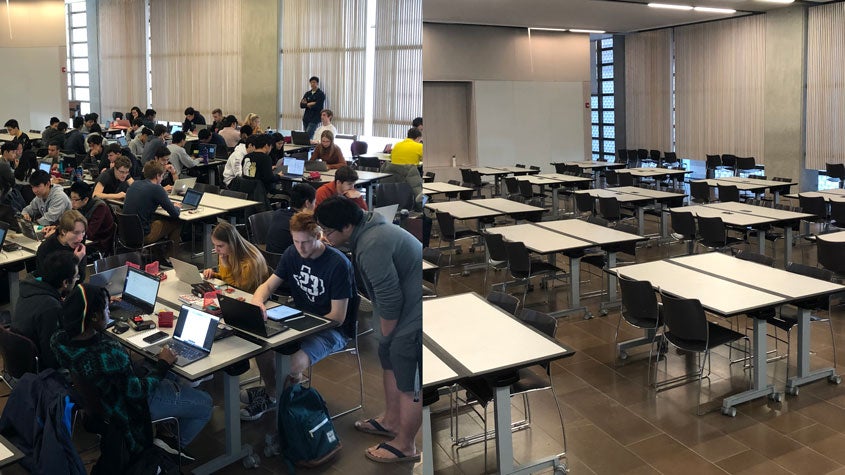“Putting this class together has been quite a story. Actually, we could turn it into a miniseries. It has more storylines than Game of Thrones.”
That’s Ray Simar, professor in the practice of electrical and computer engineering (ECE), describing how he is turning ELEC 220, “Fundamentals of Computer Engineering,” into an online course for the duration of the COVID-19 pandemic.
ELEC 220 is a required course for all ECE and computer science majors at Rice, with 219 students enrolled for the spring semester. Before the coronavirus, lectures were held in McMurtry Auditorium in Duncan Hall on Tuesdays and Thursdays, and three lab sessions were scheduled for Tuesdays and Wednesdays in 101 Brockman Hall, with students required to attend one of them.
“Lab courses have always been a huge challenge for online education. There’s a lot of close interaction between me, the students and the teaching assistants. This is the fourth year I’ve taught this class, and for the students it has always been very hands-on and individualized,” Simar said.
Students have access to all required hardware and software. At the start of the semester, they purchase a palm-sized electronic controller that connects to their laptop via a USB and such necessary electronics wiring materials as a breadboard.
Simar has about 35 teaching assistants and his lab assistant is Joe Young, a fifth-year doctoral student in ECE. “Brockman 101 is the size of a cafeteria. In the past, we circulated from table to table and helped the students troubleshoot. We looked at not just the wiring and the controller configuration but also the pieces of code the students had written to control things. This all seemed difficult to put online,” Simar said.
Beginning with the first class of the spring semester, on March 24, Simar’s online classes will be conducted via Zoom, the video conference service. During the lab sessions, students will break up into “cohorts” numbering about 15.
Simar will also use Canvas, a web-based learning management system. “Basically,” Simar said, “we already have in place an architecture that will run with an online algorithm on top of it.” All of his lectures will be recorded for students to consult.
“I don’t want to use this new reality as an argument for going permanently online,” Simar said. “But I think the students will accept the challenge if I put in the effort. I don’t want to give them the sense of normality. That’s not possible. I want to give them the sense of familiarity.”

